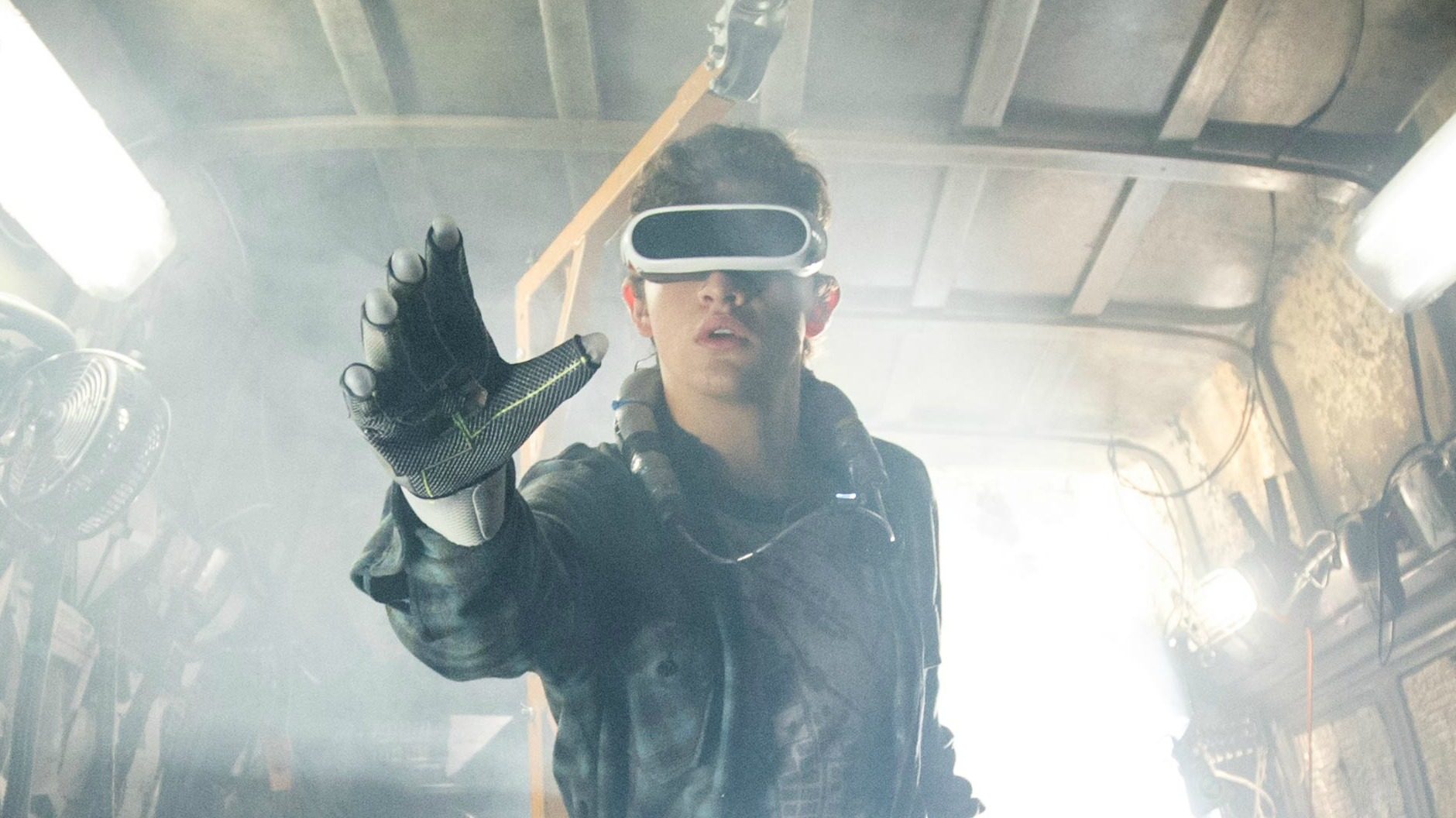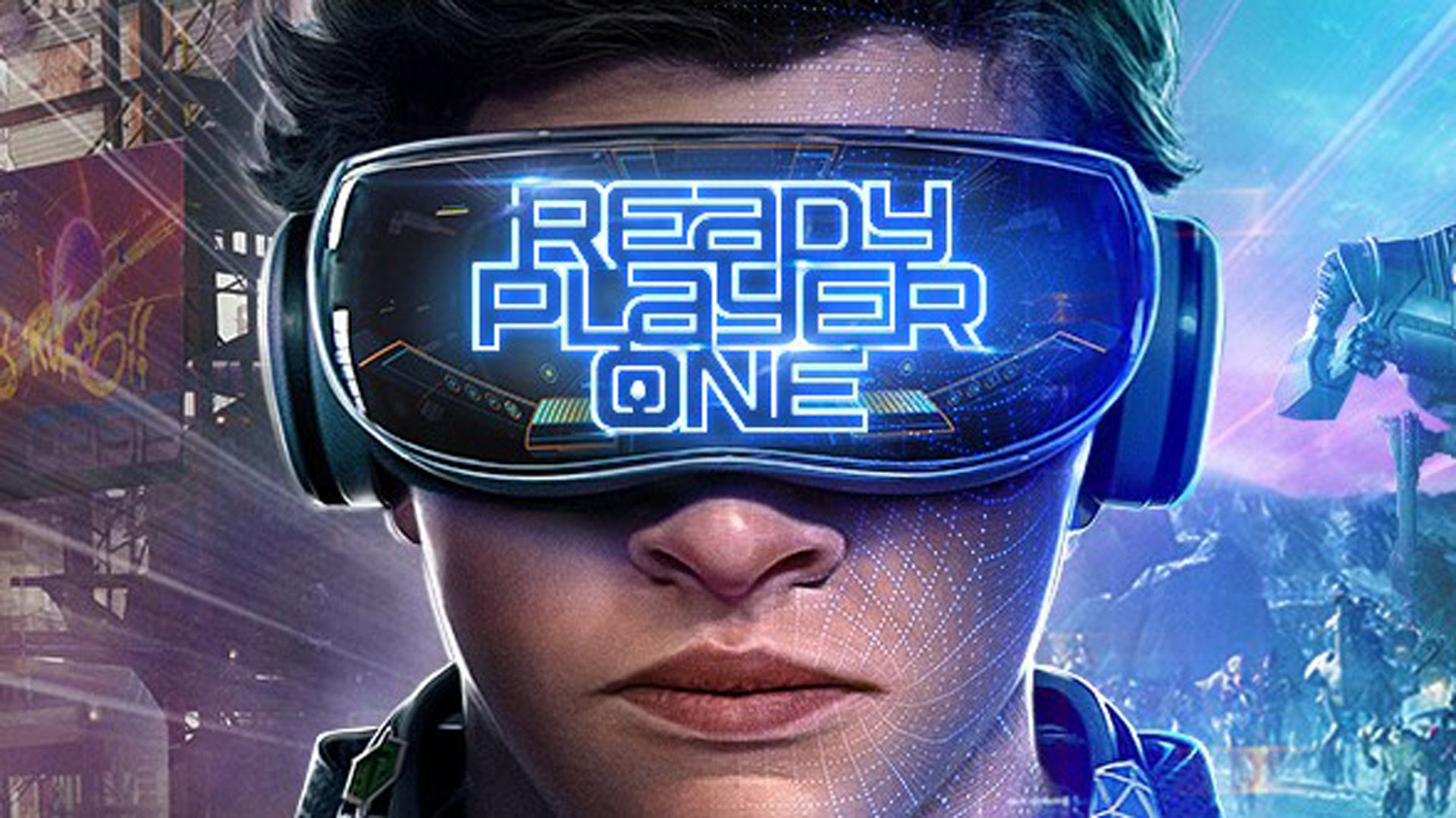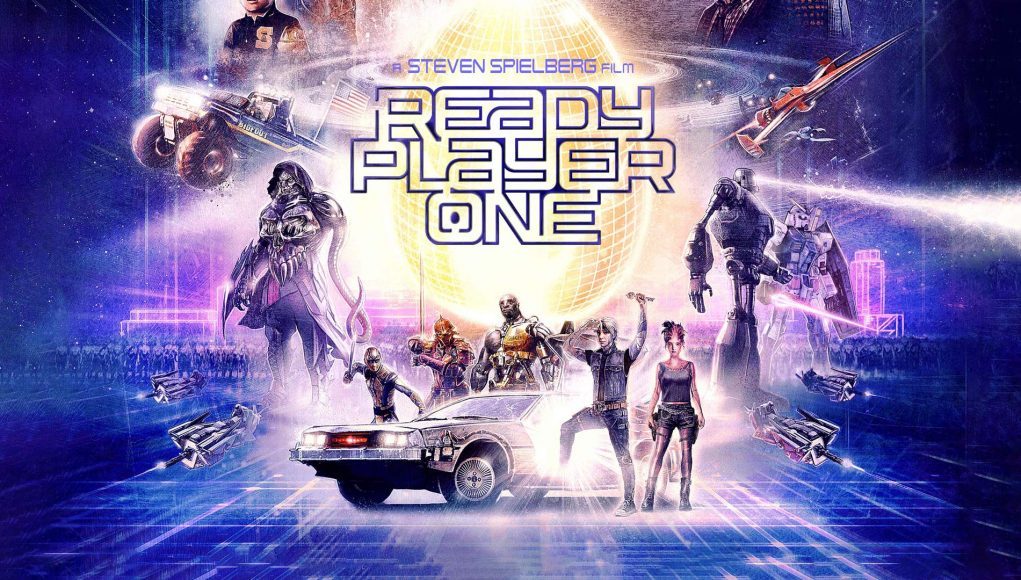Steven Spielberg’s film adaptation of Ernest Cline’s best-selling novel Ready Player One is hitting the big screen later this month. As a story based in a world where virtual reality headsets are omnipresent and everyone is connected to the massive multiplayer online universe dubbed ‘The Oasis’, many are wondering what role the film will play in VR’s continued push towards mainstream adoption. While basically none of the technology portrayed in Ready Player One reflects the current state of VR devices or software, leaving a clear gap in its ‘advertised’ benefits and the reality of the experience available to VR users today, it still has the potential to be a significant factor in VR adoption. To what extent? Well, that comes down to how many eyeballs see it and if it sucks or not.
In case you haven’t read the book, or heard anything about the movie, here’s the spoiler-free summary from Warner Bros.:
In the year 2045, the real world is a harsh place. The only time Wade Watts (Tye Sheridan) truly feels alive is when he escapes to the OASIS, an immersive virtual universe where most of humanity spends their days. In the OASIS, you can go anywhere, do anything, be anyone-the only limits are your own imagination. The OASIS was created by the brilliant and eccentric James Halliday (Mark Rylance), who left his immense fortune and total control of the Oasis to the winner of a three-part contest he designed to find a worthy heir. When Wade conquers the first challenge of the reality-bending treasure hunt, he and his friends-aka the High Five-are hurled into a fantastical universe of discovery and danger to save the OASIS.
Like pretty much everyone else on the planet, save film critics and the people who attended a limited early debut, I haven’t seen the film yet. I do have a pretty good idea of what’s in store though; I’ve read the novel a few times, seen every trailer, dragged my eyes across every behind-the-scenes image currently available, and even skimmed the supposedly leaked screenplay; call it my duty as a journalist who both says and types the letters “VR” about 50 times per day. I am allowing myself one unfounded prediction though before seeing the film: even though HTC Vive is the official VR partner of the film, you won’t see the protagonist Wade Watts wearing an HTC-branded headset. In every image I’ve seen of Wade (Tye Sheridan), he’s wearing a variety of fictional headsets emblazoned with the story’s evil corporation ‘IOI’, so there doesn’t appear to be any VR-specific brand placement in the film. So, the film isn’t overtly making any specific claims about current tech—something that ought to help people avoid making erroneous connections between the film’s idealized VR tech, and what really exists on shelves today.

Inevitably some people will mistake Ready Player One‘s ‘perfect’ version of VR tech for the technology available today, replete with the still-fictional ability for complete sensory immersion inside a photorealistic MMO—something that plainly doesn’t exist. After all, to the uninitiated, the outward appearance of a person wearing a VR headset is pretty much the same as in the film. It’s probable most people will implicitly understand that it’s no more possible today than the augmented reality objects and characters seen in recent sci-fi flick Blade Runner 2049 (2017). Ready Player One is set in a fake future set 30 years from now; most people will get that.
Despite the gap between film and reality, fiction can still be a powerful motivator in driving public behavior though, and presenting the viewer with a place or activity can be just as powerful as flashing a well-positioned can of Coke on the screen.
The Lord of the Rings Effect
Compelling movie-goers out of their seats and into a specific location, activity, lifestyle doesn’t appear to have a fool-proof recipe, although it’s clear that a fantasy-based, 2 hour-long advert has done the trick for a few very successful films. And in that vein, Ready Player One is an advert for VR.
Case in point: Hobbits don’t exist. Cheery old Hobbiton, although maintained as a tourist destination today at a family run farm five miles west of Hinuera, New Zealand, isn’t a ‘real’ place either. Just the same, New Zealand’s Tourism Board continues to capitalize on the success of Peter Jackson’s film adaptations of J.R.R. Tolkien’s The Lord of the Rings and The Hobbit Trilogy by essentially advertising it as the ‘Land of the Middle Earth’ thanks to the country’s role in serving as the main filming location. New Zealand’s International Visitor survey found that 16 percent of international tourists cited The Hobbit Trilogy as the initial reason they considered a trip to the country in 2015. You could call it The Lord of the Rings Effect. You could also equally call it The Top Gun Effect, or The A River Runs Through It Effect.

A River Runs Through It (1993) starring Brad Pitt is well-known by many a Montanan as the main reason for the massive influx of fishing tourists looking to live the poetic fly fishing lifestyle famously espoused in the film. Having lived in Montana in the late ’90s and done my fair share of fishing there, A River Runs Through It was on the lips of nearly every crotchety fisherman, who would incessantly blame the movie for the fresh rash of Californians walking in with a pair of brand new waders and trying his/her hand at slapping a fishing pole against a few low-slung tree limbs. It wasn’t just a Montana phenomenon though, as it was the impetus for a 40 percent increase in fly-fishing gear sold by major mail order firm The Orvis Company.
After Top Gun, the US Navy saw a 500 percent surge in interest to become a Navy aviators after its 1986 release, attributed directly to the film’s portrayal of the idealized lifestyle and drama surrounding rock star-level naval pilots. Whether actual enlistment numbers were dramatically affected still isn’t really clear, as the Navy hasn’t released any hard numbers, however what is clear is people saw the possibility of a lifestyle portrayed in a work of fiction and wanted a piece of it.
While direct product placement is a bit of a different beast in terms of motivating movie-goers to open their wallets, it’s interesting to note that in Risky Business (1983), Tom Cruise’s prior film to Top Gun, where Cruise dons a pair of Ray-Ban Wayfarer sunglasses, resulted in a near doubling of in sales of the iconic shades in 1983 alone. Like I said, Ready Player One‘s ability to drive VR adoption isn’t so much about direct product placement because it’s a sci-fi film without a direct link to a specific product, although you might consider the VR tech of today to be Ready Player One-adjacent enough to drive significant interest. Effectively converting that interest into a headset purchase doesn’t come without some barriers of its own though.
Possibility for Disillusion
There’s plenty of different options to choose from, but there’s also a real possibility for disillusion. It’s not so much tied up in the technical state of current VR hardware either, as you can really have some life changing experiences in VR right this second, but it’s more about disillusion with the hardware’s barrier to entry. Movie-goers fresh from the theater looking to spend money on a headset will have only a few real options, and starting out from scratch (ie: no gaming computer, no VR-supported flagship phone, or no PlayStation 4) means newcomers will have to drop a few hundred dollars minimum as the price of admission for a decent quality experience.

While Oculus Rift and HTC Vive have come down in price significantly since launch in 2016—a Rift now at $400 and a Vive at $600—combined with the need for at very least a middle tier gaming PC, the overall investment in the highest-quality experience is still prohibitively expensive for a good chunk of the film’s target audience, which is likely gunning for males aged 13-30. Samsung Gear VR and Google Daydream require specific flagship smartphones, which if you already own will only set you back about $130 for just the add-on headset and controller. The level of immersion for these more limited mobile VR headsets, while great starter devices, doesn’t really have the depth of gameplay possible with positionally-tracked headsets such as Rift, Vive, or Windows VR headsets. PlayStation VR is a much better candidate for the target audience, although without a PS4, you’re still looking at a total of about $600 by the time you buy the console and headset.
There are future headsets on the rise, such as the $200 Oculus Go standalone headset and a still-hypothetical Western release for HTC Vive Focus standalone, but with no official launch date for either, they simply don’t factor in yet. However, the $400 Lenovo Mirage Solo standalone could stand to benefit, though it won’t launch until May 5th, outside of the film’s prime time. People might also try a cheaper Cardboard smartphone holder and decide it’s not worth investigating further.
These aren’t insurmountable barriers, but they will add friction in the vital process between exiting the theater and heading to Best Buy for that first headset purchase motivated by seeing a cool adventure that uses virtual reality.
Please Don’t Suck
If it’s anything like the book, Ready Player One the film will excel at selling a single idea more than anything—the ‘wow, VR is going to be really cool and I want in now no matter what’ idea we all had at some point before jumping into the deep end. Of course, there aren’t any guarantees that Spielberg’s Ready Player One will pan out as one of those instant classics on the level of Top Gun either.

It’s impossible to fit a book’s-worth of content into a two hour-long film, so there’s bound to be discussion surrounding whether the movie truly captured the soul of the book while not managing to lop off the important bits for the sake of brevity and traditional movie pacing. Whether it resonates with the audience or not is really the only metric that matters here though. On that front, Rotten Tomatoes currently gives the movie an aggregate critic score of 80%, so it’s poised to do at least an average job of getting butts into seats on its own merits. Also, it’s a Steven Spielberg flick, so it certainly has name-brand appeal.
We can really only wait and see if the film will be considered a successful ‘activation’ of VR. That said, if the film isn’t spectacular and doesn’t really ‘stick’, it certainly won’t hurt VR adoption, it’ll simply fade into obscurity and cease exist in the collective consciousness.







